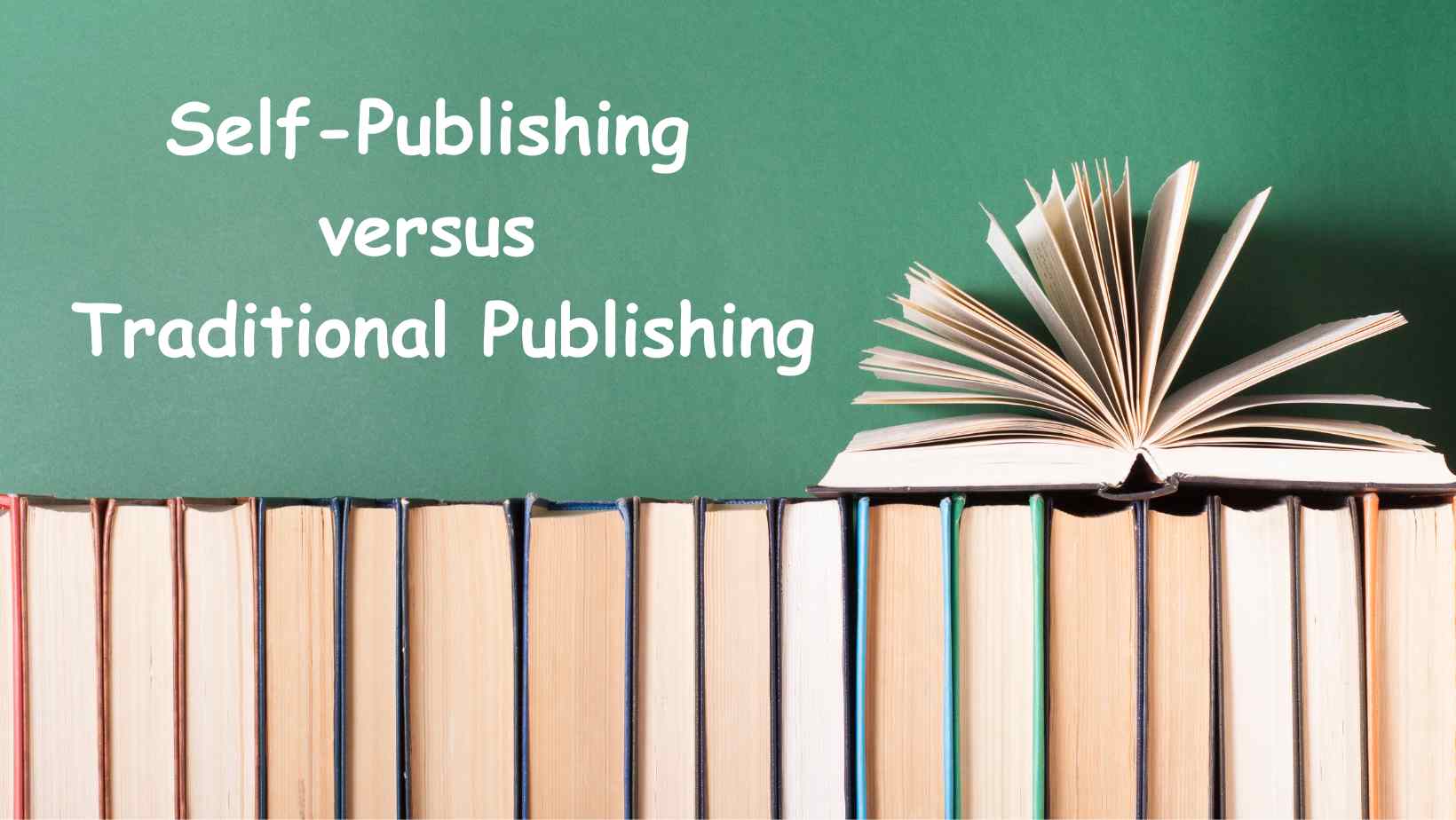Determining the right publishing path for your writing journey is a crucial decision. Self-Publishing & Traditional Publishing are two popular routes, each offering distinct advantages and disadvantages.
By delving into the pros and cons of both methods, this blog post aims to equip you with the knowledge needed to make an informed choice that aligns with your goals.
Table of Contents
Discover Self-Publishing & Traditional Publishing Overview

Two paths lie before you: Self-Publishing & Traditional Publishing. Traditional publishing follows the conventional route, where authors submit their manuscripts to publishing houses. If accepted, the publisher takes charge of editing, design, printing, distribution, and marketing.
While this can be a dream come true for many writers, it’s important to consider the cons. Traditional publishers do assist authors with these crucial tasks, but in return, they claim a percentage of the royalties. Furthermore, the traditional publishing process can be lengthy, spanning months or even years before a book is published. Nonetheless, for those seeking the recognition and support of a traditional publisher, this path may still be appealing.
Self-Publishing Overview
Self-publishing has emerged as a viable option for aspiring authors, offering increased control and autonomy over their work. However, along with its advantages come certain challenges. On the positive side, self-publishing empowers authors with complete creative authority, allowing them to choose cover art and set prices according to their preferences. Additionally, self-published authors retain all profits from book sales without sharing them with a publishing house.
However, self-publishing necessitates taking on the responsibilities traditionally fulfilled by teams of editors, designers, and marketers. This can be an intimidating undertaking, demanding substantial amounts of time, energy, and financial investment. Nevertheless, with meticulous planning and unwavering dedication, self-publishing can be a rewarding and fulfilling experience.
Assessing Financial Advantages: Self-Publishing & Traditional Publishing
When it comes to evaluating the financial benefits of different options, it can be a complex endeavor. This task demands meticulous analysis, attention to detail, and a keen eye for numbers. Take into account all variables, including costs, revenue, and potential risks, to make an informed decision based on available data. This approach will help you maximize your financial gains while minimizing potential losses.

Pros and Cons of Creative Freedom
The ability to bring your ideas to life without any constraints is a cherished aspiration for every creator. However, this freedom of creativity comes with its own set of advantages and disadvantages. On the one hand, the liberty to express oneself through artistic endeavors can be incredibly liberating, leading to groundbreaking and innovative work.
On the other hand, without any limitations, it’s easy to lose sight of the original concept or objective. Moreover, creative freedom doesn’t guarantee automatic financial success or critical acclaim. It ultimately falls upon each individual to decide how they wish to approach their art.
The Right Path for You:Self-Publishing & Traditional Publishing
Begin by clearly defining your goals and values. Conduct thorough research on each option, carefully considering the pros and cons. While a list of pros and cons can be helpful, don’t solely rely on it.
Trust your instincts and listen to your inner voice. Seek advice from trusted friends, family members, or professionals who can provide guidance. Remember, there is no one-size-fits-all answer, and what works for one person may not work for another.
Tips for Finding Support
Navigating a challenging process can often feel isolating, but finding support has never been more accessible. With the proliferation of social media platforms and online communities, connecting with like-minded individuals who understand your struggles is just a few clicks away. Seek out those who have experienced similar journeys, as they can offer valuable advice and emotional support. Professional organizations or therapists specializing in your specific area of interest can also provide valuable guidance.
Both Self-Publishing & Traditional Publishing offer rewarding options for authors. Writing a book is a unique endeavor for each individual, and the decision of which path to choose should align with your interests, level of commitment, and goals. Both routes involve risks, effort, and decision-making. However, by thoroughly researching the publishing models that suit you best and building a supportive network, it can become an incredible journey that has the potential to yield both monetary and creative rewards.
If you find yourself unsure about the best path or need assistance understanding the complexities of your chosen option, reach out to Elite Authors. Our experienced agents are experts in the field and are ready to guide you on your writing journey!
Conclusion
The decision to Self-Publishing & Traditional Publishing route is one that should be made based on a careful evaluation of the advantages and disadvantages of each. Self-publishing offers authors unprecedented control over their work in every aspect, from creative expression to pricing and distribution. This route is often more accessible and can lead to higher profit margins per copy sold. Moreover, it provides an open gateway for authors who might have otherwise been overlooked by traditional publishers. However, this path also demands authors to be their own marketers and salespersons, requiring substantial investment of time and resources. Self-publishers must also navigate the complexities of the publishing industry, which can be daunting without the right guidance and tools.
On the other hand, traditional publishing can lend credibility to an author and their work. It offers professional editing, marketing, and distribution services, thereby freeing up authors to focus solely on their writing. But this method often means surrendering a significant amount of creative control and revenue to the publisher. The process to even get a manuscript accepted can be lengthy and challenging, with no guarantees of success.
There’s no one-size-fits-all answer as to which route is better. An author’s choice between Self-Publishing & Traditional Publishing should take into account their personal goals, skill set, resources, and the kind of support they seek or are willing to forgo. It’s crucial to remember that, regardless of the chosen path, writing a book is just the first step in the journey; getting it into the hands of readers and making an impact with it is the ultimate goal.

